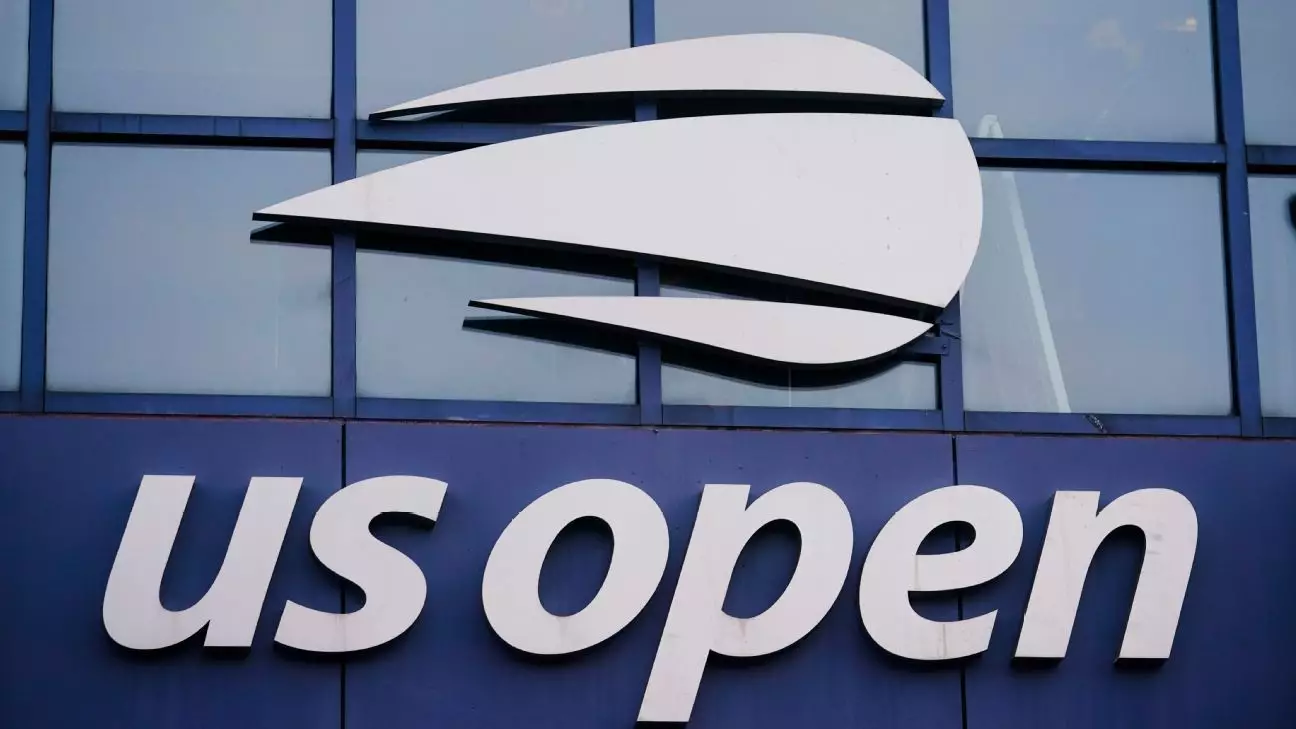The United States Tennis Association (USTA) has taken a bold step in the realm of tennis by moving the mixed doubles championship to a strategic position in the tournament calendar. Scheduled just before the commencement of the singles events, the hope is to attract top-tier players to participate in a format that emphasizes excitement and competition. With the lure of a $1 million prize, the USTA is eager to transform what has been regarded as a lesser event into a mainstay of the Grand Slam experience.
The revamped mixed doubles format is not just a simple schedule change; it is a complete overhaul designed to breathe new life into doubles tennis. With only 16 teams set to compete over two days, pairs will engage in shorter, more dynamic matches that follow a best-of-three sets structure, played to just four games at a time. The introduction of a deciding point at deuce and tiebreakers set at 4-all aims to enhance the pace of the game, catering to a fanbase that craves action and excitement. The final will bring some familiarity back into the fold, resembling traditional Grand Slam matches, ensuring that while the event is progressive, it does not completely abandon its roots.
Executive Director Lew Sherr has expressed confidence that these changes will bolster the appeal of mixed doubles, stating, “The goal here is to attract the biggest names in the sport and showcase them in a fun, competitive environment.” Historically, many high-ranked singles players have avoided doubles, possibly due to fears about exhausting themselves before singles competition. However, with less time commitment and a lucrative payout, the USTA hopes to shift this trend.
Further backing the USTA’s bold move are the insights gained from a “Mixed Madness” exhibition held last year. The event attracted many prominent players, including the likes of Coco Gauff and Naomi Osaka, and demonstrated that there is indeed a market for doubles that features top talent. It also indicated that the scheduling could allow for top-tier athletes to engage in doubles matches without compromising their readiness for the singles contests that follow.
Notably, the inaugural Mixed Madness was well-received, proving the viability of high-stakes competition in a doubles format. Sherr remarked that the participation of elite players dispelled any doubts about whether mixed doubles could deliver a competitive atmosphere worthy of audience engagement. He acknowledged that the original $500,000 allocation for that event was disproportionate to the amount of talent and excitement it generated.
Accelerated prize money is a tantalizing incentive for players to participate. By increasing the winnings to a whopping $1 million for the mixed doubles championship, the USTA is sending a clear message about the significance of doubles in the grand scheme of the tournament. Eight teams will gain automatic spots based on their combined singles rankings, while additional teams will receive wild cards, ensuring that the competition is both elite and diverse. This restructured format not only highlights existing talent but also opens doors for emerging players eager to make their mark.
However, the implications of this shift are multifaceted. While it expands opportunities for singles players to engage in doubles, there is a tangible downside for established doubles specialists who rely on Grand Slam appearances for their income. The decision to prioritize a mixed format might limit their access to prestigious tournaments. In acknowledging this, Sherr stated that the USTA plans to redirect funds that would have gone to mixed doubles to ensure that men’s and women’s doubles remain viable alternatives for players who excel in them.
With these changes taking effect, a new narrative in tennis could emerge—one that sees mixed doubles celebrated alongside traditional singles matches. While this innovative approach may ruffle some feathers within the doubles community, it emphasizes a commitment to evolving the sport and attracting younger audiences globally.
As anticipation builds for the revamped mixed doubles championship during the US Open, the world will watch closely to see if the bold experiment pays off. Will the innovative format draw in the big names of singles tennis and elevate the standing of doubles overall? The answer promises to define the future of the genre within professional tennis, setting the stage for a fresh appreciation of a format that has often hovered in the shadows of singles competition.

